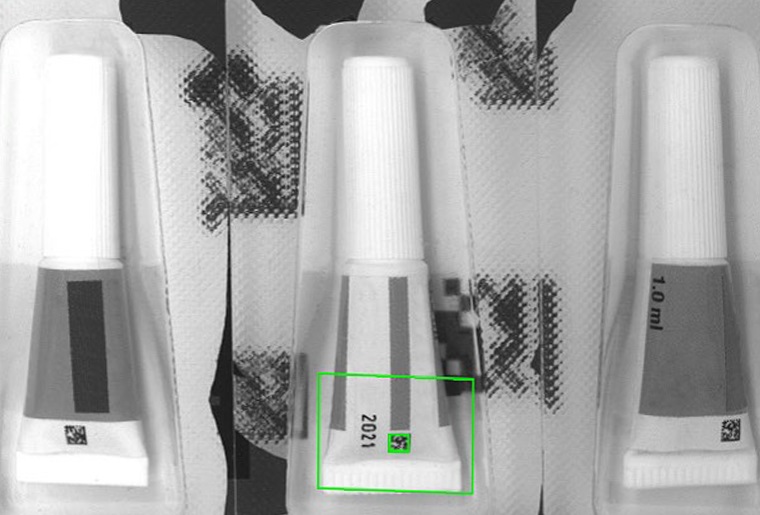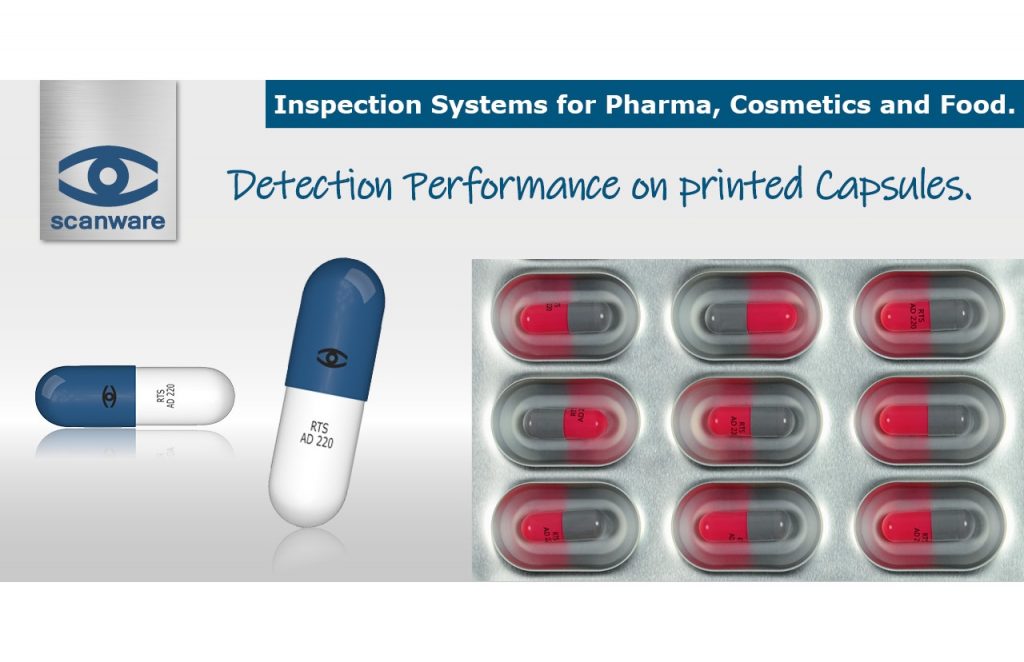
Datamatrix reading on curved surfaces
There are special requirements for the packaging of products in tubes, which Scanware manages with various systems. While the SPECTRA blister & product inspection systems are used to check the presence of the tubes and their caps, the SIGNUM print image inspection systems prevent product mix-ups by detecting the presence and reading printed codes. The code readers used can inspect even the smallest code dimensions in the form of DataMatrix codes located on curved surfaces.
During a running production, movements of the individual tubes within the cups can occur, so that skewed positions of the DataMatrix codes to be inspected can arise. This can lead to the individual tubes within a blister showing different representations of the codes and a perfect alignment of the inspection objects cannot be guaranteed.
Scanware has developed a reliable solution for reading distorted DataMatrix codes on tubes and uses a frame grabber for large inspection areas, on which two high-resolution 12 megapixel black and white cameras are operated.
With this solution, elements are searched for in a predefined large-area inspection area which, despite distorted representations, correspond to the characteristics of a DataMatrix code and resemble it visually. After successful localisation of the individual codes within the blister, identification then takes place so that the DataMatrix codes are inspected for presence and then read.
Detection performance on printed capsules

For many years Scanware has been one of the leading companies in vision inspection technology. But make no mistake, we have our fair share of competitors and finding our way through pricing battles and breaking into areas where we are not so well known is not always easy. However, when a competitor’s product is installed on a new machine and it doesn’t do the job, those doors open a little more easily.
In a recent case, this exact thing happened. The customer wanted to inspect products on a blister line with print on the capsules. They were assured by the blister machine manufacturer that one of our competitor’s products would do the job only for it to later fail at FAT time. We were asked to assess the products to see if our systems could reliably inspect them. The result was affirmative and a retrofit at the OEM was organised. Following installation of the machine at the customer’s site, the handover was seamless, the customer is very happy and the ‘difficult products’ present no problem to the Scanware SPECTRA Colour inspection system.
The inspection of hard gelatine capsules with print is a challenge – especially in aluminium blisters, as the black print and the blister often have the same colour values. Here Scanware has developed an algorithm for calculating the envelope curve, with the help of which the colour of the print can be attributed to the product and not to the background. In this way, the tolerances can be kept small. This functionality is included in the largest software package and offers your company the highest level of security for this product group.
Source: https://www.scanware.de



